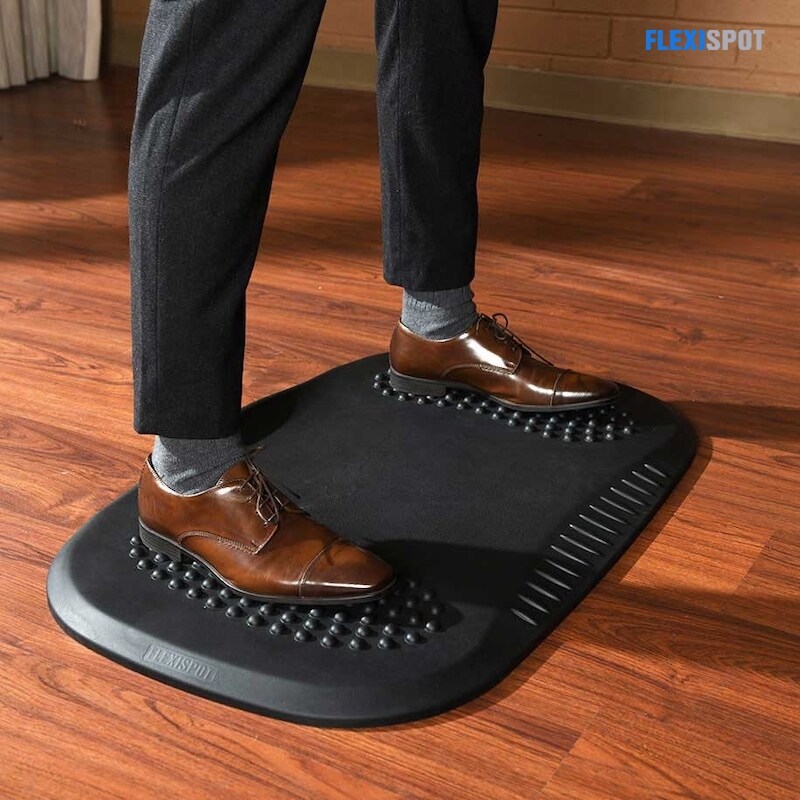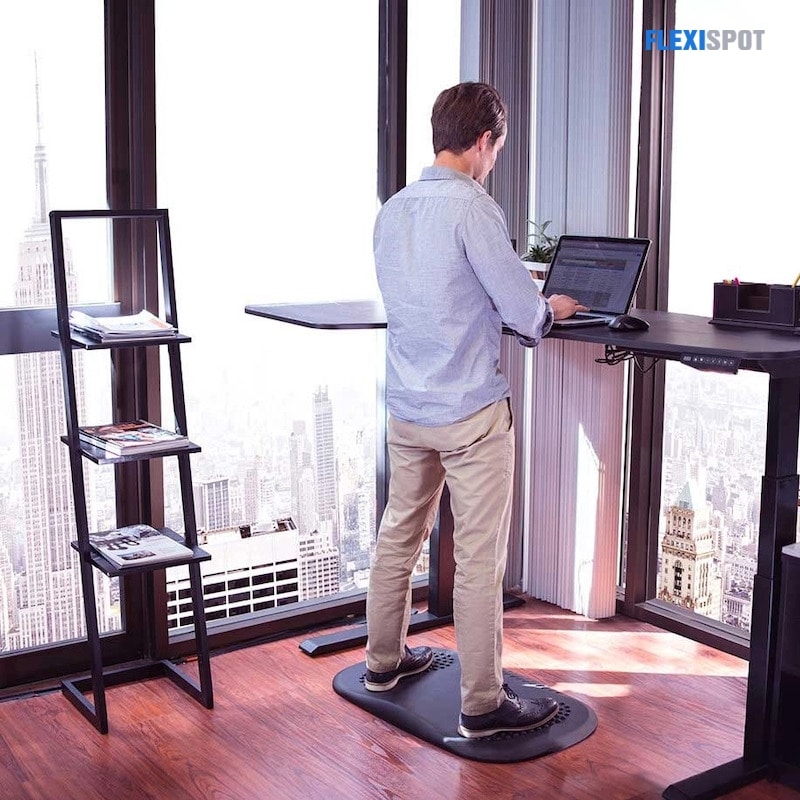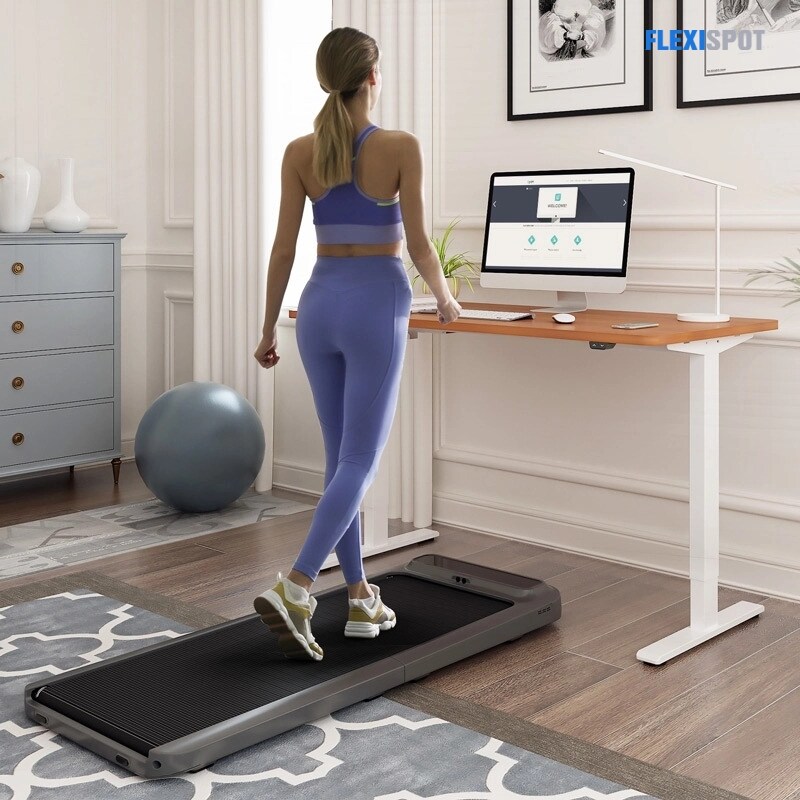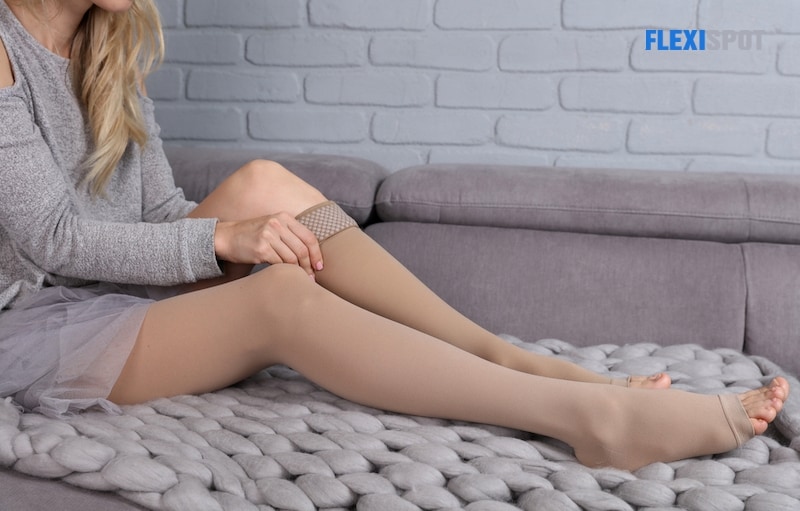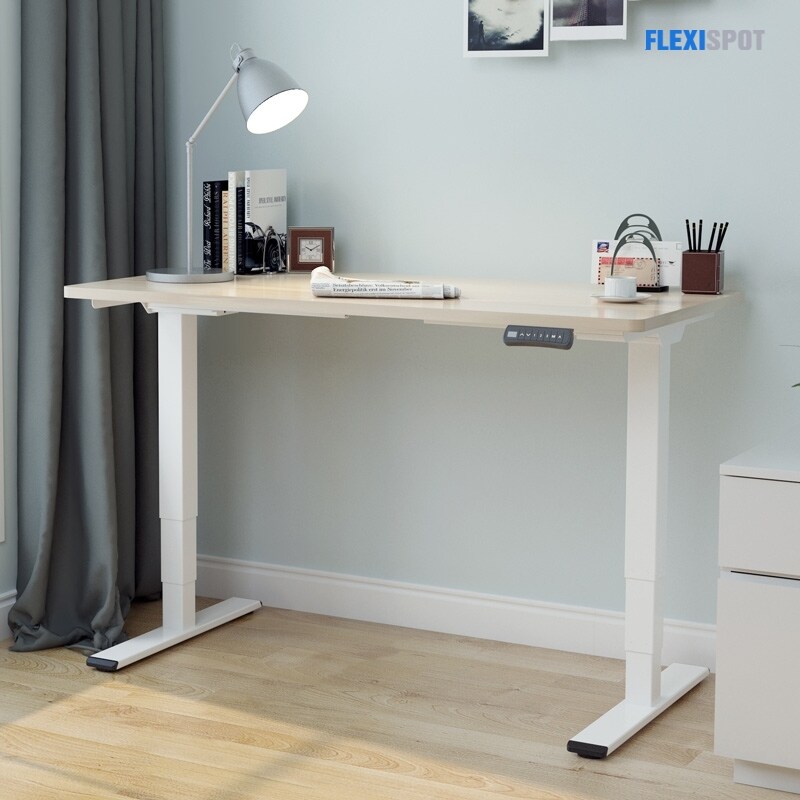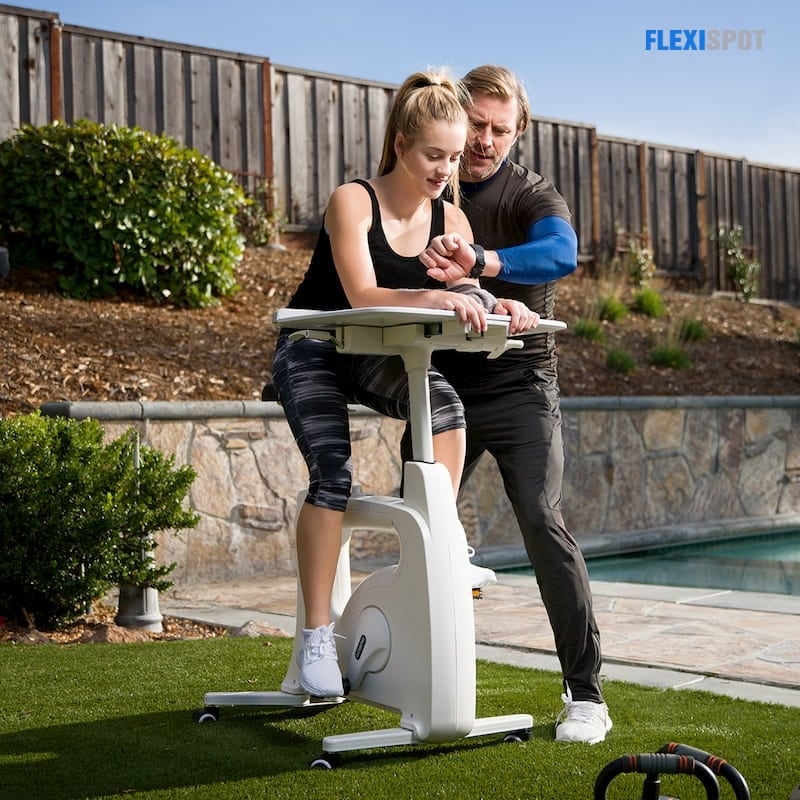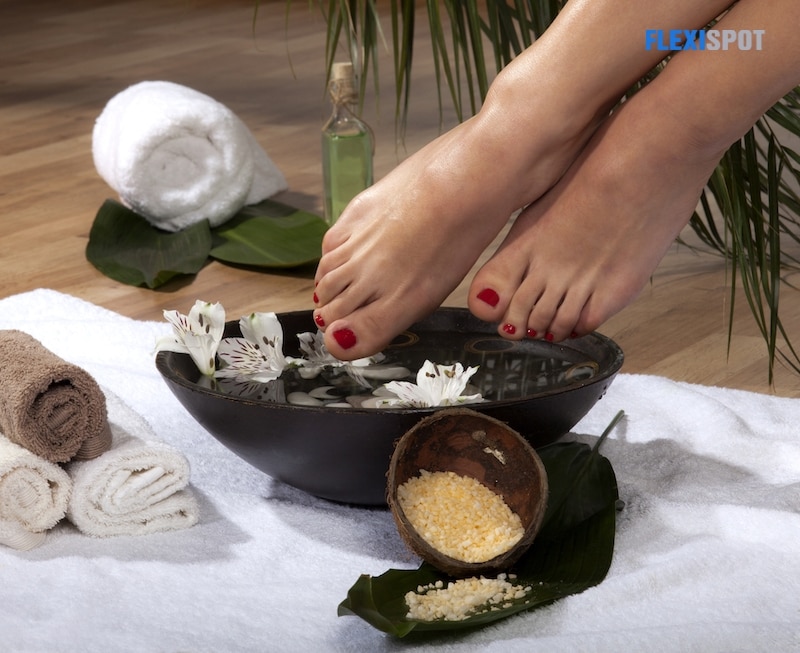A sedentary lifestyle is hazardous to human health, according to countless studies. This is frequently caused by sitting behind a desk, barely standing up to walk, and not getting enough exercise in spare time. As a result, innovation has begun to address the difficulties linked with harmful office habits, most prominently the standing desk. But, extended standing (described as standing for more than 60% of your day) does have its own set of health hazards, including:
- lower back and leg pain
- fatigue
- discomfort
- cardiovascular complications
- leg cramps
- plantar fasciitis
- edema (swelling)
- varicose veins
- venous insufficiency
- flat feet
- bunions
Standing on the job not only increases the chance of different leg and foot disorders by putting strain on bones, tendons, muscles, joints, and ligaments, but it also intensifies fatigue and tiredness. Standing for lengthy periods reduces blood flow to the lower limbs, resulting in pain. If you have to stand a lot at work, there are various strategies to lessen or avoid the dangers of foot and leg disorders.
Wear the Right Shoes
Foot problems affect 60 to 70 percent of people at some point in their lives. Many employees make the simple error of purchasing shoes that look excellent but aren't fit for their work, putting appearance before functionality. While some fields, such as hospitality or construction, have tight footwear regulations, others are more lenient, allowing you to wear anything you choose. Here are some tips on picking a nice pair of shoes if you'll be on your feet for the majority of the day:
- Securely fastened and covered. Slip-on shoes should be avoided
- A wide heel with a sturdy back
- Cushioned inner lining
- A non-slip, gripping sole. For work environments like kitchens, an oil-resistant sole may be required
- In some workplaces, steel-capped boots are necessary
Ensure there's enough room in the toe, so you don't brush your toe against the top of the shoe while walking. Leather is, without a doubt, the greatest, but it is also the most pricey. Leather that has been properly cared for will form and retain its memory, safe and comfortable over time. However, several new materials are starting to look like that.
Stand On an Anti-Fatigue Mat
Anti-fatigue mats are intended to relieve tension on your legs and feet by supplying a cushioned surface on which to stand for extended durations. The most common material for these mats is a thick rubber, but they can also be made of leather, vinyl, foam, or even wood. If you ask, your employer is likely to provide you with an anti-fatigue mat since they have been shown to lessen the occurrence of foot and lower limb disorders.
Note: Individuals tripping over thick anti-fatigue mats can be a minor issue at work, so always be mindful of where your mat and those of your teammates are positioned.
Take Seated Breaks
Working more than 8 hours each day, particularly on your feet, is not recommended by most medical experts. If you must work longer than 8 hours each day, take more rest periods, particularly if you perform physical activity that requires repetitive movements. Excessive repetitive movements have their own set of issues and raise the chance of sprains, foot/leg pain, and other injuries. Having a few more stretching breaks would not only cause people to feel better, but it will also reduce your chance of work-related ailments resulting from prolonged standing.
You may also spend your breaks by sitting since that might
be the only times you will get the chance to:
Sit down for lunch hour.
When you're on your lunchtime, sit back down and put your feet up as you eat and drink. Even if you're in a rush, take that opportunity to relieve the strain on your feet.
Sit down during breaks.
Make sure to take your breaks and sit for the entirety of it, particularly with your legs elevated to encourage better circulation due to gravity's diminished impacts. While you're relaxing, take off your shoes to let your feet cool a bit through evaporation.
If possible, alternate sitting down and standing while working.
While many present jobs are inactive and require sitting, some occupations, such as bank teller, chef, hairdresser, cashier, factory worker, and numerous retail and construction jobs, to mention a few, require a lot of standing. Yet, there are indeed opportunities to sit and rest your legs and feet while still performing and being productive, so explore them and let your supervisor know what you're doing. Sitting while picking up the phone or filling out forms, for example, may be acceptable at your job, especially if no clients are there.
Strengthen Your Body
If you have the time, strengthen your body with particular workouts before starting a position that needs you to stand for long periods. Leg and calf raises, squats and heel raises, will help to boost the lower limbs. Weightlifting, pilates, and other similar activities can be beneficial. Also, go for walks and gradually increase the time you walk to improve your leg endurance progressively. If you have back discomfort, standing for lengthy periods can aggravate it, so making sure you have a solid core to handle the day's tasks is also crucial.
Wear Compression Stockings
Compression stockings support the blood vessels and muscles of the lower leg, which helps to minimize swelling and increase blood circulation. They can be found online, at medical supply shops, and occasionally in pharmacies and physiotherapy clinics.
Wear supportive pantyhose or well-padded socks instead as an alternative.
People who have venous insufficiency (leaky vein valves) or inflammatory varicose veins will have to use compression stockings.
If you get heel pain while standing, thick, well-padded socks can help.
Change Positions Throughout the Day
Sitting or standing in the same position for much more than 20 minutes every day is generally harmful to your health. If you spend a lot of time sitting at your desk, make sure to move about now and then.
Use an Adjustable Desk
There are a variety of ergonomically designed solutions ready to support you, improve the comfort of your workplace, and promote spine well-being. These items can be customized and adjusted to suit your exact requirements. They may also promote long-term healthy behaviors that can help to decrease or prevent neck and back pain. Standing desks with adjustable heights such as those from FlexiSpot provide a smooth transition from a sitting to a standing position. These workstations urge you to change your position throughout the day, which offers a number of health benefits, including calorie burn. Because ergonomic equipment is an investment in your health, you should do your homework before purchasing.
Lose Some Weight
Overweight people or obese, in general, have more foot issues due to the increased strain on their feet. Obese people are more likely to have flat feet, excessive pronation, falling arches, and "knock knees" (medically termed as genu valgum). As a result, lose some weight to help your feet. Increase your cardiovascular exercise, such as walking, while lowering your caloric intake to lose some weight.
If you cut your calorie consumption by 500 calories per day, you'll lose around 4 pounds of fat tissue every year.
Most sedentary individuals only need about 2,000 calories per day to sustain their physiological functions and have the energy to engage in mild exercise.
Take a Foot Bath
Pain and edema can be reduced dramatically by immersing your feet and lower legs in a warm Epsom salt bath. Magnesium, found in salt, is known to aid muscle relaxation. If inflammation and swelling are a concern for you, take an ice bath after the warm salt bath for about 15 minutes or until your feet are numb.
Epsom salt baths are known to be beneficial for reducing restless leg syndrome, which disrupts sleep patterns.
To avoid slipping and falling, always properly dry your feet before getting up and walking away from your foot bath.
Keeping your neck and back in consideration during the workday with simple healthy routines will add some vitality to your 9-to-5 and may help you avoid pain in the future. When it comes to risk management, the secret to success is prevention.
